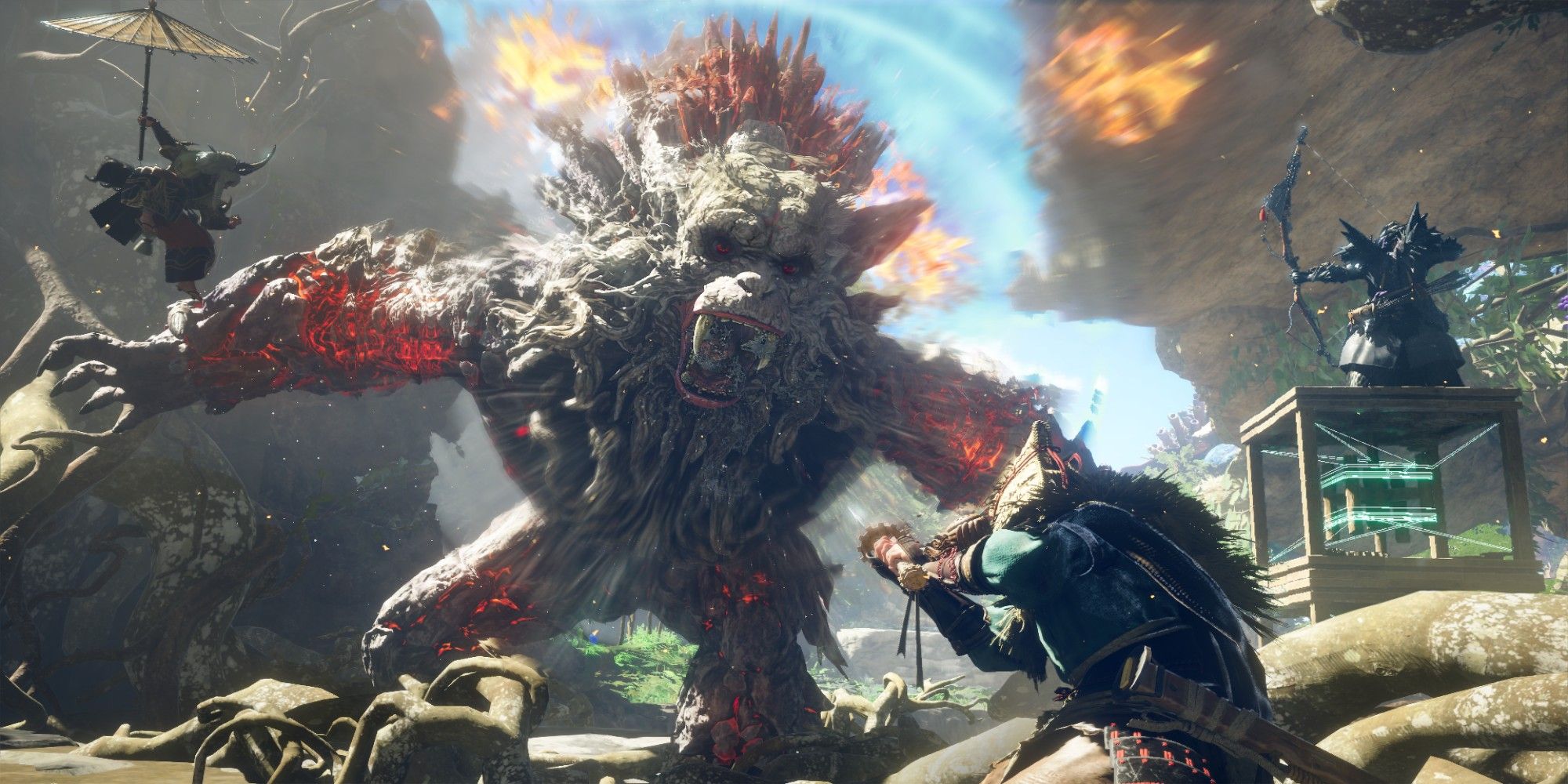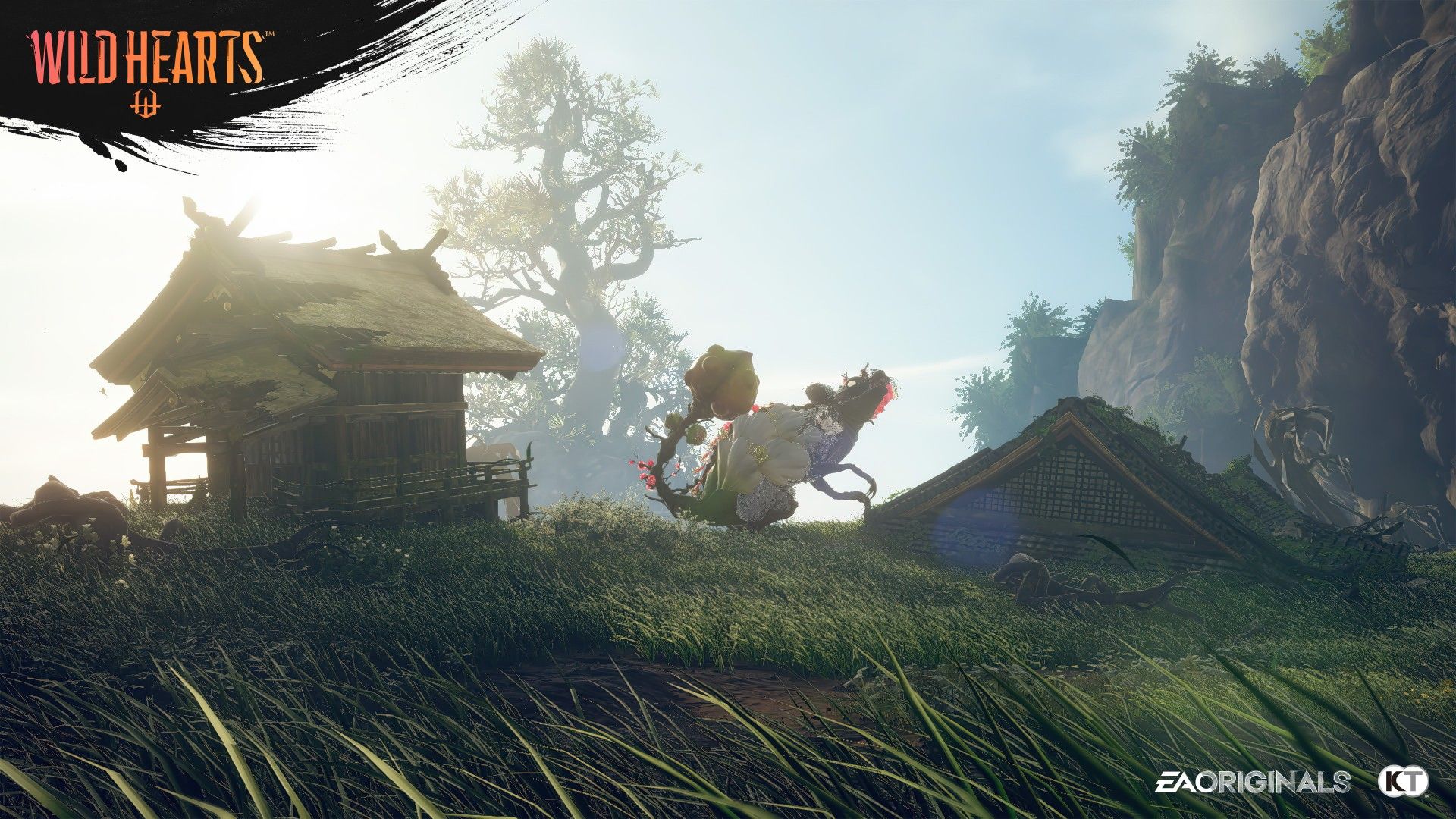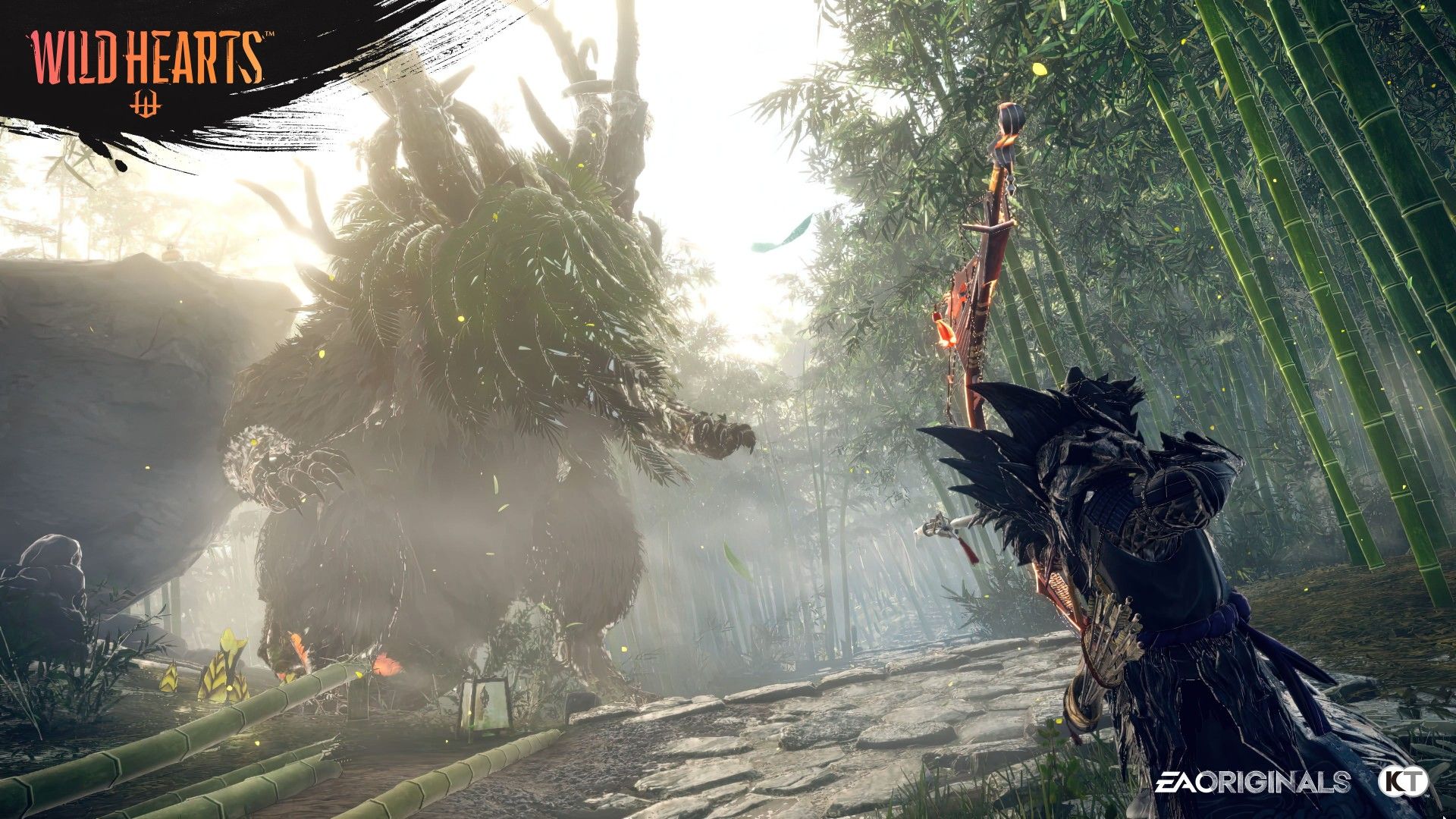Wild Hearts is a combination of combat and crafting draped in a gorgeous fantasy setting. It's a collaboration between EA Originals and Koei Tecmo, the latter having produced games like the Nioh series and Dynasty Warriors. In Wild Hearts, players must help save the world of Azuma from giant elemental monsters called Kemono through both fighting and utilizing an ancient technology known as Karakuri.
The game's setting of Azuma is inspired by the idea of a fantasy feudal Japan. Throughout the course of Wild Hearts, players will traverse four different open-world biomes (as well as the hub village of Minato), each based on the four seasons: Hanagasumi Hill, Starfall Island, Scarlet Canyon, and Frozen Moon Castle. As players explore the different environments, they will be able to set up campsites as a means of fast travel, as well as a myriad of other travel-aid structures, which is helpful for a world as large as Azuma.
The land of Azuma is plagued by Kemono, who are powerful elemental creatures which are described by developers as the "embodiment of raw natural power." Similar to the epic fights of the Monster Hunter series, much of Wild Hearts' gameplay revolves around larger-scale battles with huge beasts. Each have their own unique move sets and patterns, as well as their own materials that can be earned from slaying them. All Kemono in the Wild Hearts demo were stunning, perfectly fusing together real-life animals with fantasy nature elements, like the rat-inspired Ragetail whose vine-like tail easily smashes players.
The protagonist's journey in Wild Hearts first begins after a close call with an icy, lupine creature known as a Deathstalker, which helps them discover the ancient art of Karakuri. Karakuri are quickly craftable objects in Wild Hearts for both in and out of battle. The first Karakuri players will learn are simple boxes that can be stacked atop one another to access higher areas. These can also be used for a myriad of purposes during fights - players can swiftly construct a wall of boxes to block enemy attacks and knock beasts backwards, and the boxes can also be scaled and jumped off of to perform a special airborne attack. Players will continue to acquire more Karakuri recipes over time that are inspired by different Kemono fights, like a spring that aids in quick dodges, and the game encourages pairing Karakuri together mid-battle to make even more useful structures.
Wild Hearts also has a second, more permanent type of this art form called Dragon Karakuri. This type of Karakuri is used frequently at campsites to set up things like a campfire and tent, as well as things like a crafting station where an ally will help players improve their weapons and smith new ones. Other noteworthy Dragon Karakuri from the game's demo include a hunting tower which players can use to help locate their next kill, and zipline-esque structures called Flying Vines which are installations that help players travel across large distances quickly. Developers made a point to mention that every user's Karakuri will remain during online play, allowing other players to see the unique layouts and shortcuts they've created within their version of Azuma.
Both Karakuri and Dragon Karakuri require different resources. Basic Karakuri require Karakuri Thread, which can be mined from rocks, but Dragon Karakuri are a bit more complicated. In order to build Dragon Karakuri in different areas, players must open dragon pits, which will increase the area's supply of dragon lode. The dragon lode drains with use, but can be further increased by enlarging dragon pits with crystals, one of the many useful resources found in Azuma. Players can also find ingredients for cooking in WIld Hearts - which can be used to temporarily increase their stats - as well as self-explanatory Healing Water.
Wild Hearts is designed for up to three players online, and users can connect with one another via campfire to either invite others to their world for assistance or jump into another player's fight. Interestingly, developers stated that if players who are in the same spot in the game's story connect online, they can continue to progress both their stories together with milestones that will carry back over into their own save. Wild Hearts will also utilize difficulty scaling during multiplayer, ramping up the challenge for each additional hunter. However, Wild Hearts also takes into account players who would prefer to hunt Kemono by themselves, making small robotic companions called Tsukumo discoverable around Azuma that aid hunters in battle.
Although it's easy to draw comparison between Monster Hunter games and Wild Hearts, the Karakuri systems of the game really help to differentiate the two, particularly in terms of combat. Building on the fly while also dodging and slashing giant Kemono is a unique juggling act that's easy to pick up but difficult to master, and it's easy to assume that as players learn more Karakuri the more complex their fights will become in terms of strategy and necessary quick thinking. Developers also emphasized that some Kemono will require different strategies than others in order to take them down, meaning players have to get creative with their crafting. Players will have much to craft and explore and many creatures to encounter when Wild Hearts releases early next year.
Wild Hearts will release February 17 2023 for PS5, Xbox Series X/S, and PC via Origin, Steam, Epic Games Store, or the EA App. Screen Rant attended a special presentation and received a PC preview copy of the game for the purpose of the preview.



